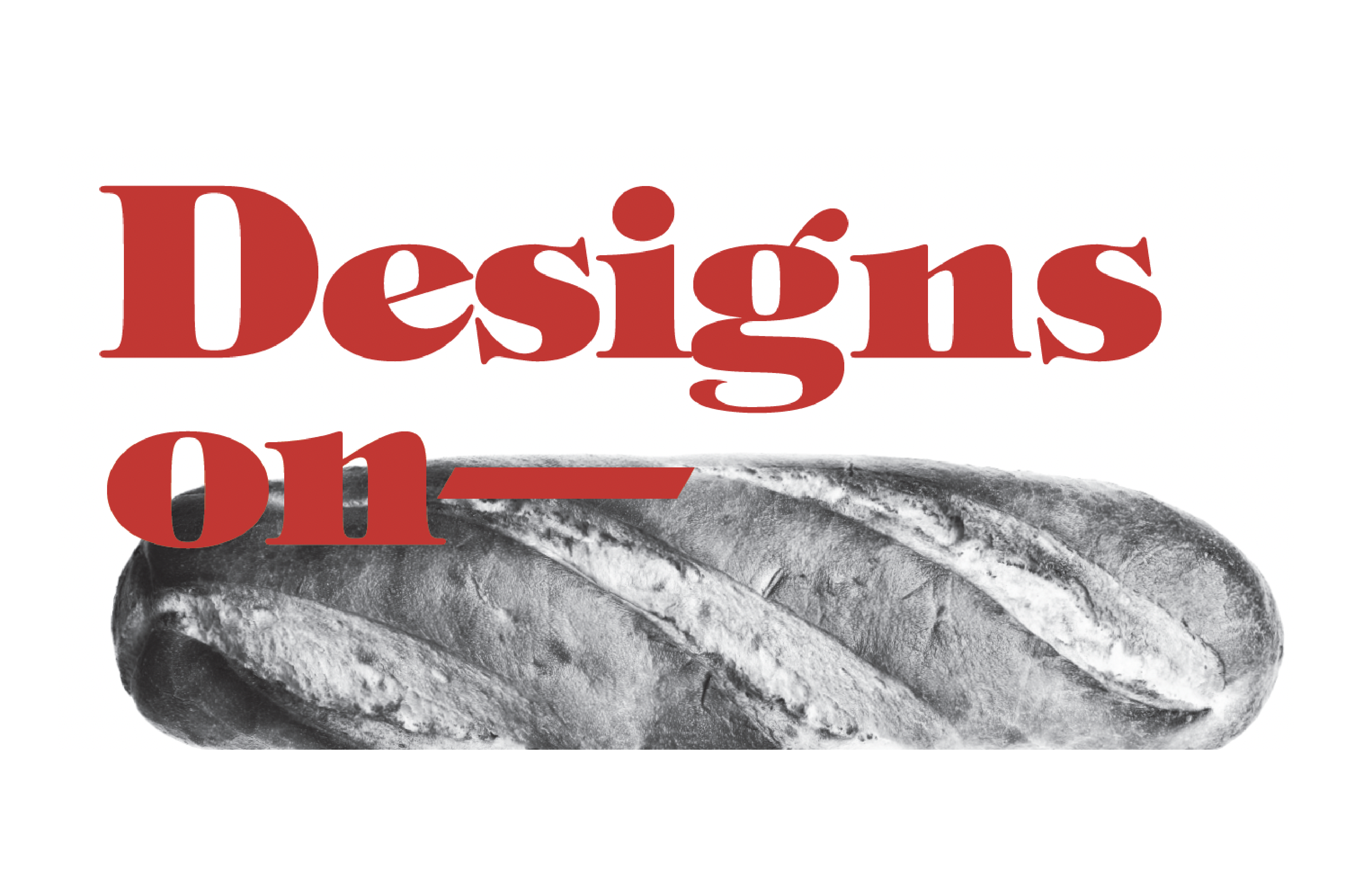Birth
From a design perspective, everything begins in either a linear or a circuitous fashion, with a creation—a birth. So, the subject warranted pensive and playful consideration by Designs on–. Vol. 4 addresses life, love, labor, and their attendant challenges in naked form. In the pages that follow, we offer design solutions to a host of challenges, including: the dangers of labor in the absence of an attending physician; communication barriers between mother and child; anxieties borne by parents throughout a pregnancy; even questions of appropriate transit attire en route to the delivery room. We hope you’ll find these functional (and sometimes fanciful) formulas provocative, entertaining, and, in some cases, even feasible.
01 NATURAL SELECTION
For every 105 boys born, 100 girls are delivered. (Every once in a while, parents get a matching set.)
Dice by Mark Fisher
Making predictions is difficult. Baby boy? Baby girl? Twins? At least an ultrasound can help with that. But everything else? Why not mitigate the uncertainty of carrying children to term by introducing an element of fun? WEENO is a game of Monopoly meets MASH, with a hint of old-fashioned gambling thrown in for good measure. With every roll of the dice, expectant parents (and other players) can bet, guess, or manufacture ludicrous myths about the height, build, and other attributes of the baby-to-be. Of course, there are no guarantees, only possibilities.
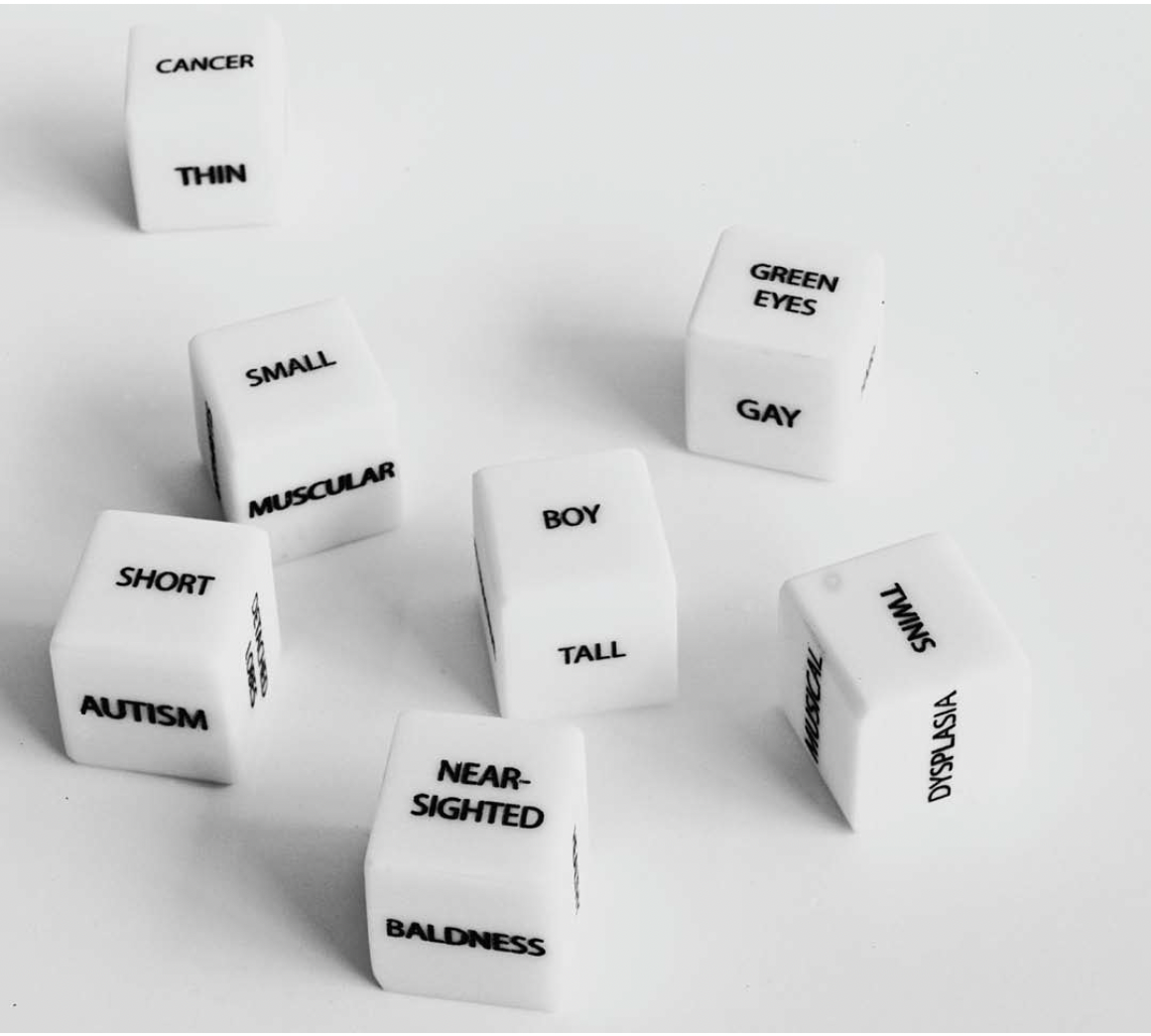
02 I HEAR YOU
By week 25, babies in the womb develop the ability to hear human voices. (By week 27, they may even recognize those voices, which is all the more reason not to overplay Van Halen albums or Garrison Keillor monologues.)
Baby Phone By David Webster
Hotlines. Reagan and Gorbachev relied on them. So did Clinton and Blair, and Bush and al Maliki. Even the mayor of Gotham and Bruce Wayne used the Batphone. But expectant mothers and their kids-to-be? Most chit-chats between woman and womb consist of oneway communiques, such as whispers, kicks, prayers, and belly rubs. The Sing-ular phone changes all that: Mothers can finally place direct calls to their unborn children with higher fidelity (and lower fees) than with an ultrasound. Sing-ular redefines what it means to “reach out and touch someone.”

03 SHOW OFF
Most women start to exhibit physical signs of pregnancy by week 12. (The rest brag about their surprisingly still-girlish figures.)
Bracelet by Katie Clark
Cartier might have mothered the “love cuff” craze, but Lance Armstrong turned bracelets-for-a-cause into a global phenom. Time for something new: a bangle with a respectable profile, a modest price tag, and a decidedly different target market in mind. The notion is a simple one. Women in their third trimester are generally easy to spot, because the bulge betrays the bun in the oven. But moms in earlier stages of pregnancy (and fathers in any stage) remain anonymous. Why not self-identify by wearing a subtle, albeit trendy, accessory? The intended outcome: elicit kind courtesies (e.g., giving up one’s seat on the subway) or congratulations from strangers. Of course, manipulative operators might abuse the bracelet—much as single men sometimes don a faux wedding band—but imitation moms and dads are preferable to counterfeit philanderers. We think.
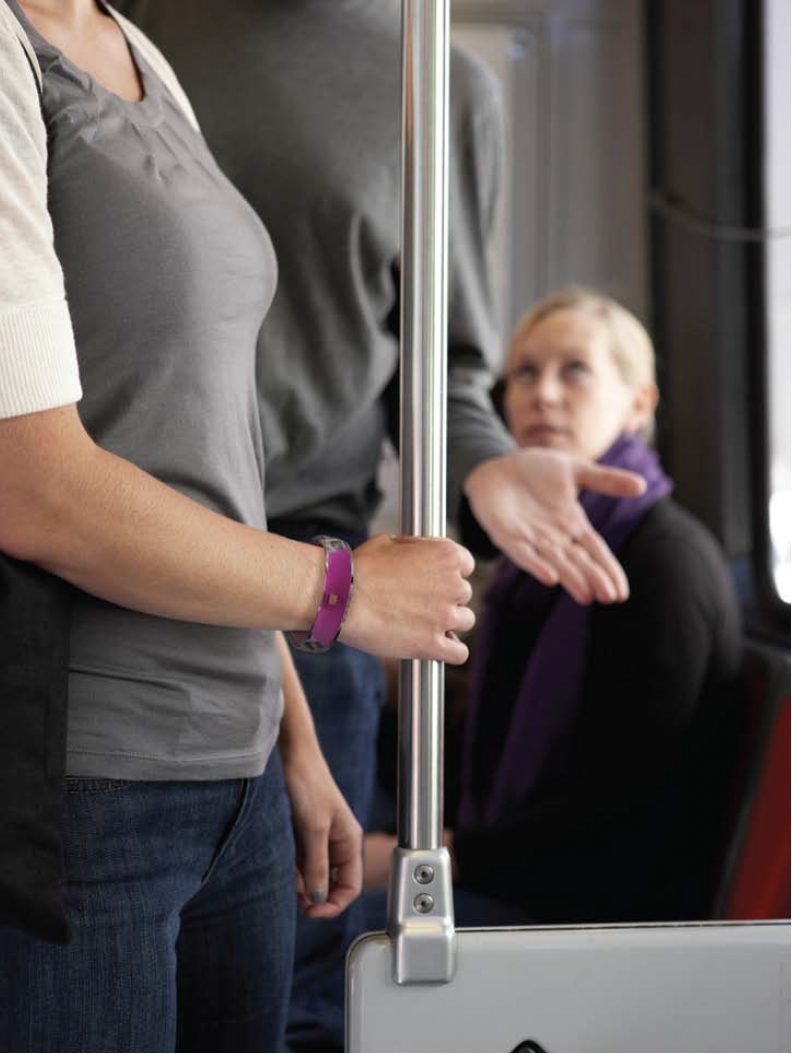

04 THAT'S FAST
The average baby’s heart beats 140 times per minute. The average adult’s ticker: 72 BPM.
HeartBeat by Thomas Brisebras
Pop icon Janet Jackson once belted out, “Gimme the beat!” Good news for expecting mothers: they can now get the beat, without having to break out eye-popping dance moves or pay begrudging homage to the 1980s. Enter HeartBeat, an outerwear line designed to be worn over standard clothing. When the mom-to-be experiences pain or discomfort related to pregnancy, she can sheath herself in the hood and listen to the baby’s heartbeat—for instant peace of mind and to remind herself why she is having him or her (or them). HeartBeat doubles as protection against the elements and avian “accidents.”

05 BOOKWORM
More than 68,650 books about birth are available on Amazon.com
Labör by Barbara Franz
In life, things are complicated. On Wall Street, doubly so. In medicine, triply so. At IKEA, not so. Why can’t more things be as simple as they are at IKEA? Maybe they could. Starting with pregnancy. Parents-to-be could receive a simple, easy-to-follow manual from their pediatricians, explaining the process and events to come. The manual could reduce anxiety, inject a bit of levity into the affair, and promote communication without introducing more complexity. (It almost makes you wish Scandinavians design everything...)

06 FLOW
During the penultimate stage of pregnancy, the flow of maternal blood through the placenta reaches a rate of about one pint (0.5 liter) per minute.
Forever by Elger Oberwelz
Cutting onions often leads to tears. Severing the single most symbolic bond between mother and baby? More tears. For wet or dry eyes, there’s a new way to celebrate the extraordinary act of cutting the umbilical cord: the Forever Ring. Fashioned from the scissors used to sever the cord, this special bauble can be worn on a finger or about the neck as a keepsake, a fashion accessory, a conversation piece, or a subtle and elegant reference to one of life’s most cherished moments.

07 COMFY
On average, parents spend 46 hours in hospital to complete a natural delivery.
Deliver Casual by Martin Meier
There’s cocktail attire, and there’s cord-cutting attire. Any gentlemen with even a modicum of taste ought to be familiar with both. To date, trusted sources have proven woefully inadequate when it comes to establishing (or communicating) style rules around the delivery room. GQ, Details, and Esquire are all equally inept. It’s high time to inculcate the virtues of gentlemanly demeanor and proper dress around delivery day. Call it “labor chic.” It starts with the Deliver Casual kit. In it, men will find: whiskey, to settle the nerves; leather driving gloves, to enhance steering performance en route to the hospital; a red “Kojak light,” to attach to the roof of the car; pre-completed hospital forms (because stylish men arrive prepared); and additional space for reading materials, to pass time in the waiting room. The only item not included is a list of excuses to furnish when the mother-to-be asks the father-to-be why he elected to wait outside, wearing gloves, drinking whiskey, and waxing lyrical about his days as a single man.
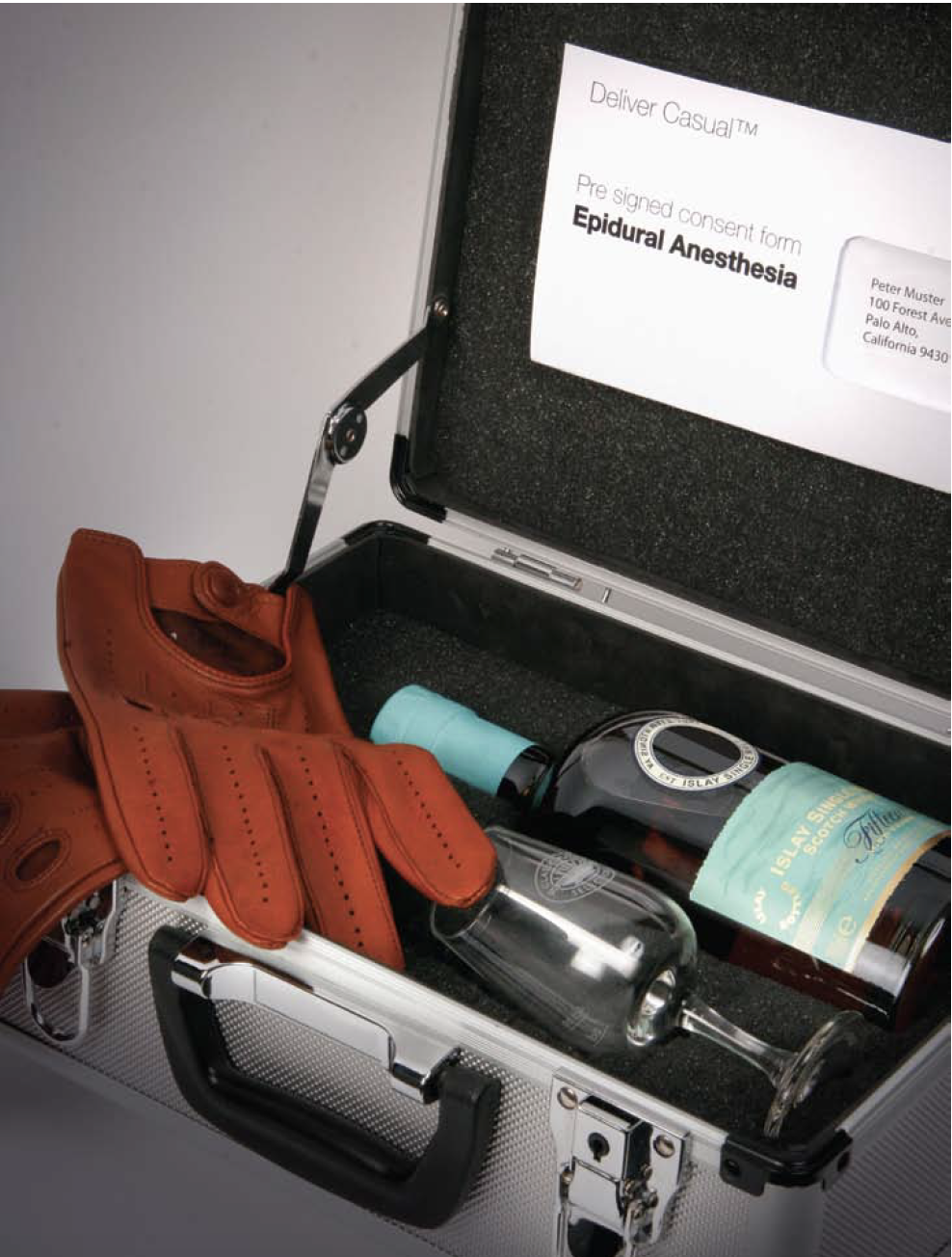
08 MAN'S STRUGGLE
In 1970, Florida Hospital became the nation’s first to pull back the curtains and permit fathers to remain (sitting or standing) in the delivery room.
Men in Labour by Andrea Mallard & the Munich studio
Mothers receive (and rightfully take) the lion’s share of credit for childbirth. Fathers are quite often sidelined, overlooked, or relegated to the status of wincing, passive observers during the physical act. But are modern dads really so detached? We think not. A video from Andrea Mallard and the fathers on staff at IDEO Munich explores the emotional journey and the unmet needs of fathers going through the experience of birth. Yes, big strong men can and do cry.
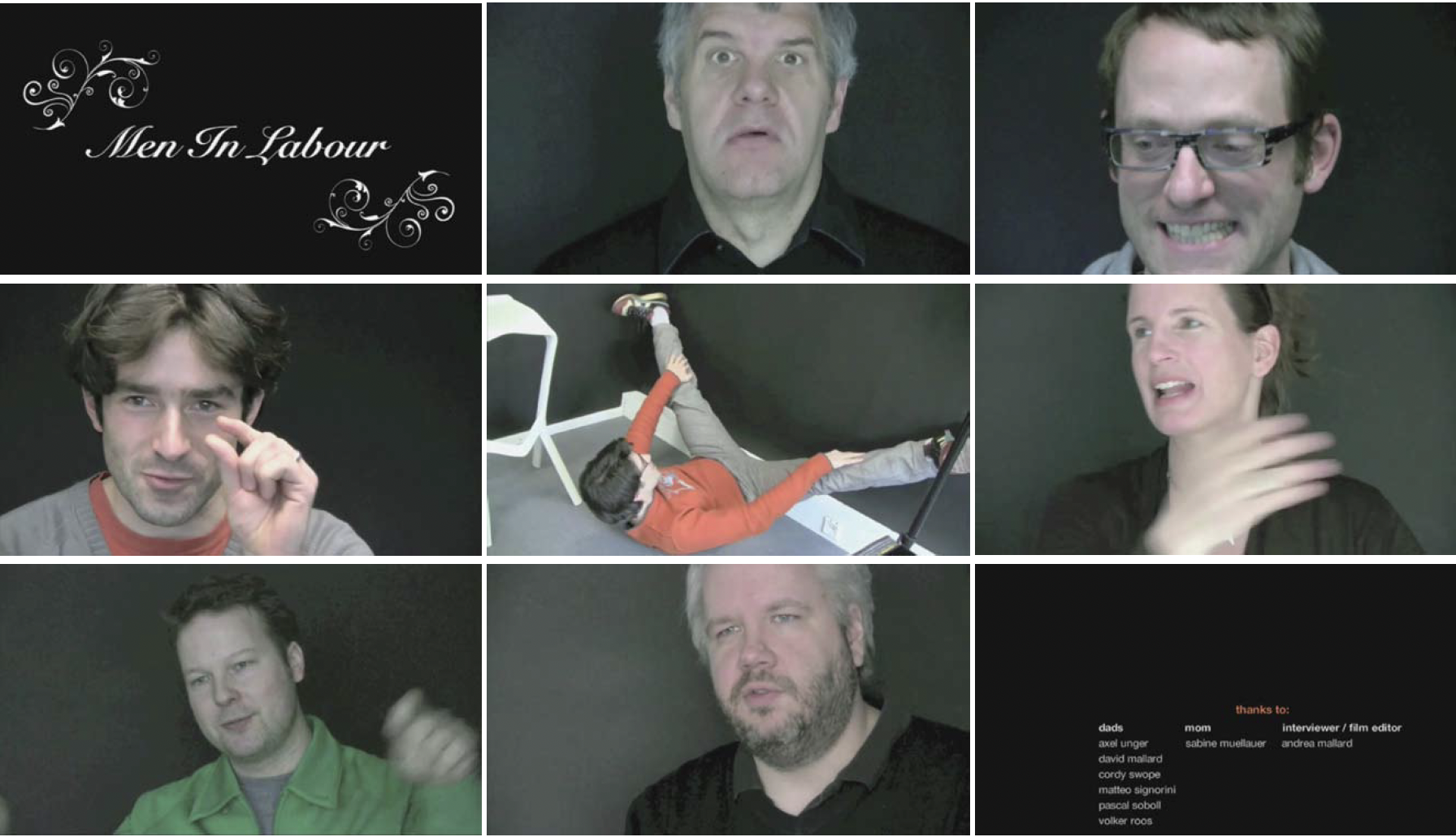
09 PREGNANT
The average number of children a woman carries to term during her lifetime: 2.6. Highest fertility rate: 7.19 (Niger) Lowest fertility rate: 0.91 (Macau)
BirthRight By Sally Madsen, Colleen Cotter, Tiffany Card, and Blaise Bertrand
BirthRight helps mothers in rural areas—those who lack access to an attending physician or emergency-room care—give birth at home. The system is designed to monitor and respond to danger signs. The BirthRight “tackle box” contains: Home Birth Alert, a log to help the mother and her birth attendants identify, track, and respond to an emergency situation; and the Vaginal Repair Kit, a sealed emergency response kit to manage postpartum hemorrhaging and infection long enough for the mother to seek formal medical treatment. All the necessary hardware comes neatly stacked and assembled. Bravery and high threshold for pain provided by users.
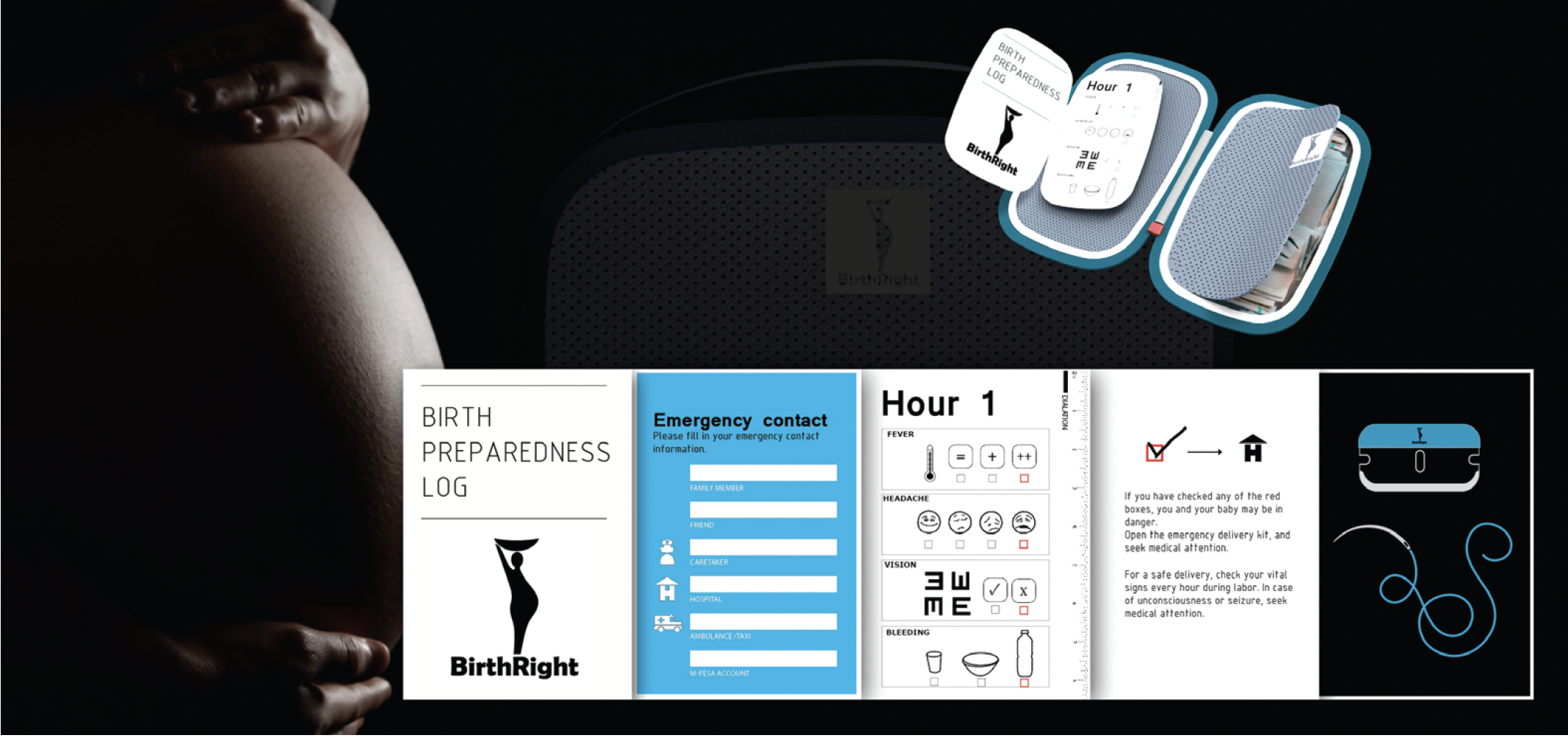
10 TOO LONG
Average time in labor: 12 hours. Feels like: 43,200 seconds.
Journey By Altay Sendil
Mystical interpretations of the Bible maintain that the Good Book maps human existence from start to finish. Perhaps. Somewhat more modestly, the modern microchip captures an enormous amount of information and concentrates it in a tiny space. (Obligatory clap.) Somewhere between the two, by comparison, Charles Joseph Minard created what’s broadly regarded as the best statistical graphic ever drawn, depicting losses suffered by Napoleon’s army in the Russian campaign of 1812. He layered complex amounts of information onto a single visual plane. (Thunderous applause.) What if we could do the same with the process of pregnancy: identify the key moments along the journey; the feelings; the vicissitudes (highs and lows); the key players at pivotal moments; and all the predictable junctures? Could be cool … and far better advised than invading Russia before winter.
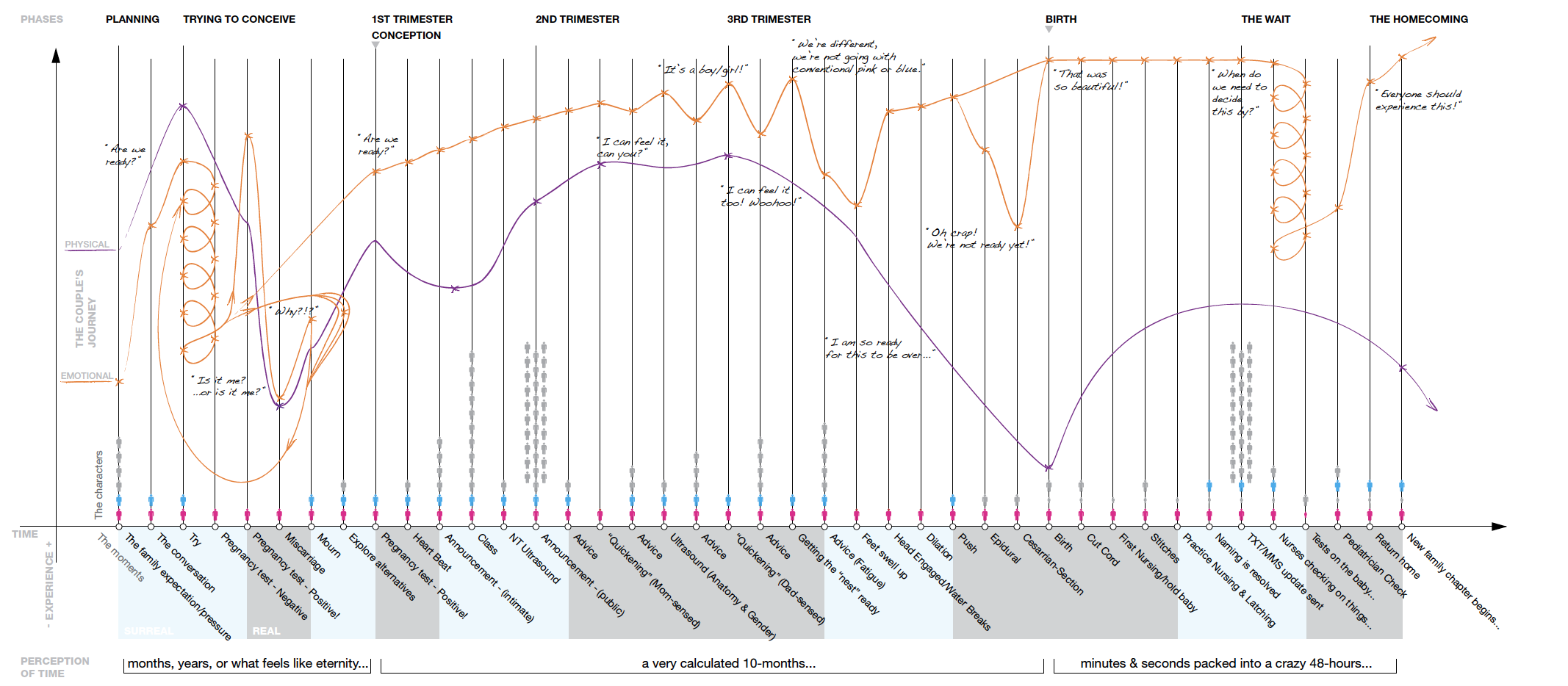
11 PRODUCE
A woman who is breast-feeding needs at least 2,500 calories per day to sufficiently nourish her baby and herself.
What I Am Made Of By Fredrik Aidehag and Pernilla Danielsson
You don’t have to be Iron Mike Tyson (or a store-bought package of Tyson chicken) to wonder what you’re really made of—or, for that matter, what your newborn is made of, aside from a few small parts of you. This colorful onesie cleverly spells out what went into Junior for 40 weeks, in utero: peas, carrots, guacamole...quiche? The hooded garment is also a playful reminder to parents of what they’re now giving their newborn (aside from love, kisses, and varying levels of neuroses.)
12 BIGGER
Newborns triple their weight within a year.
Baby Brew By Jane Fulton Suri and Thomas Brisebras
Men are obsessed with measurements—length, width, heft—and that’s just when it comes to fishing. Statistics and predictive tools run more rampant when it comes to watching professional sports, following politics, monitoring gas mileage, and bragging about newborns. Do men crave an emotional connection to their kids through numbers? If so, there’s an app for that. Baby Brew builds on men’s instinctual and insatiable desire for numbers by measuring, displaying, and sharing a full complement of vital stats (height, weight, age, etc.) along with status updates. Men—and, of course, women of equal persuasion—can share and compare their kids like rookie draft picks. Or race horses. Or American Idol contestants. (Come to think of it, that might make a good show.)


13 BABY BOOM
The average number of babies born somewhere on the planet every minute: 340. That’s nearly 5.7 per second!
Less Is More By Larry Cheng
1 + 1 = 0.751 + 1 = 3Two people can create a third, whichever way you slice it. As people who have done so will attest, having a baby creates a life and takes one away (your regular one, anyway). Hello, life. Bye-bye, “life.”

14 BURNING
Eight: The number of minutes it takes the average birthday candle to burn completely. 525,949: The number of minutes you’ll have to wait until the next celebratory burning of wax sticks.
Light of My Life By Nicholas Zambetti
Life is time, and time is precious. Birthday celebrations cast light on both of these basic principles. So, if each passing year is marked by a 24-hour period of revelry and reflection, perhaps newborns ought to be presented with a lifetime set of birthday candles? Think of them as “personal insight lights.” As children grow older, they can monitor or make note of their diminishing number of candles—and consider the fleeting and ephemeral nature of life. It might just provide the necessary impetus for them to seize the day, take initiative, or exploit opportunities to maximize life itself. Too heady? Well, at the very least, the lifetime set would save recipients from ever having to buy their own birthday candles.


15 PATERNITY
In Sweden, a father is permitted to take up to 480 paid days off work—supported by the state—to assist mothers with child rearing and related affairs at home. In the US, a father gets zero federally funded paternity leave.
Dad T-Shirts By Pascal Soboll
Mothers become mothers the moment their home-pregnancy tests turn blue. Fathers, on the other hand, often don’t feel like fathers until they stare into their newborn’s eyes for the very first time. Perhaps that’s because in the months leading up to delivery day mothers show physical signs of pregnancy—and clearly have a “job” to do—while fathers are left to fret and figure out their new roles. One remedy? Not pills. Not meditation. Dad T-shirts. Consider a series of tees that enable men to freely express their feelings about any stage of the pregnancy. They can speak their minds, document the journey, show people how well- or ill-prepared they are, or demand a bit of respect for creating a new life. Go, Dad! Swap that old GNR Use Your Illusion T-shirt for something more mature.
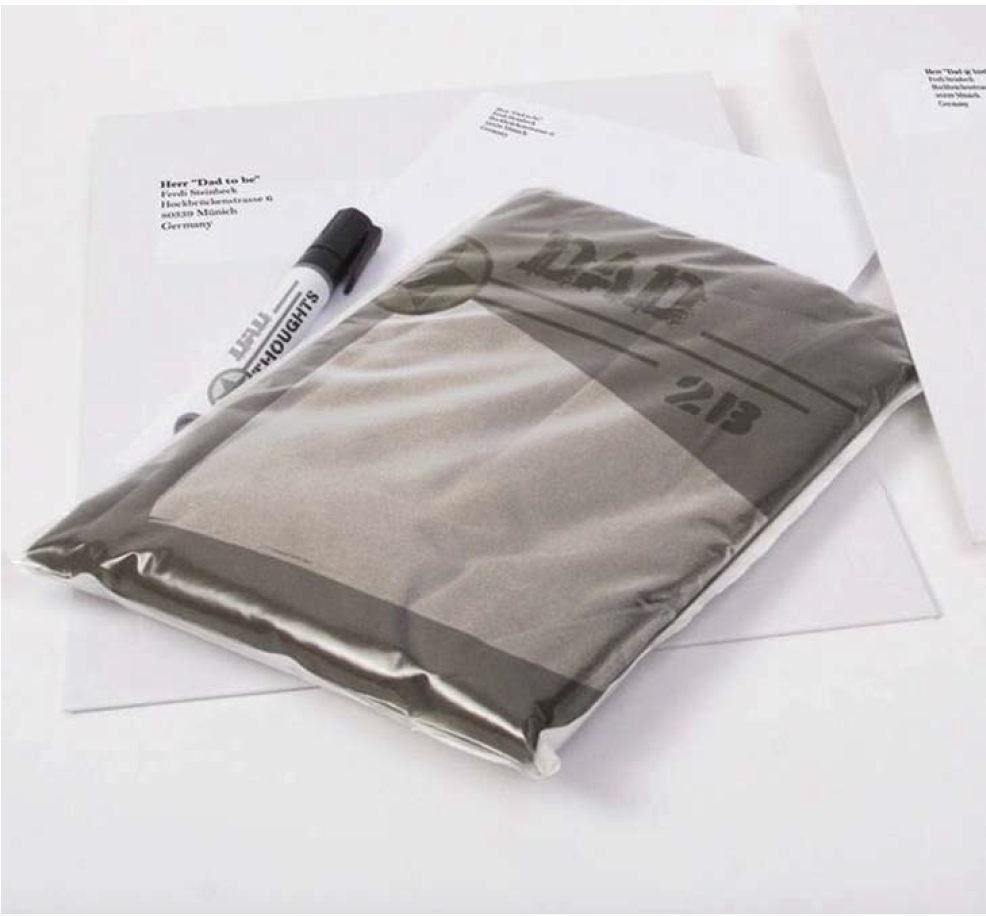
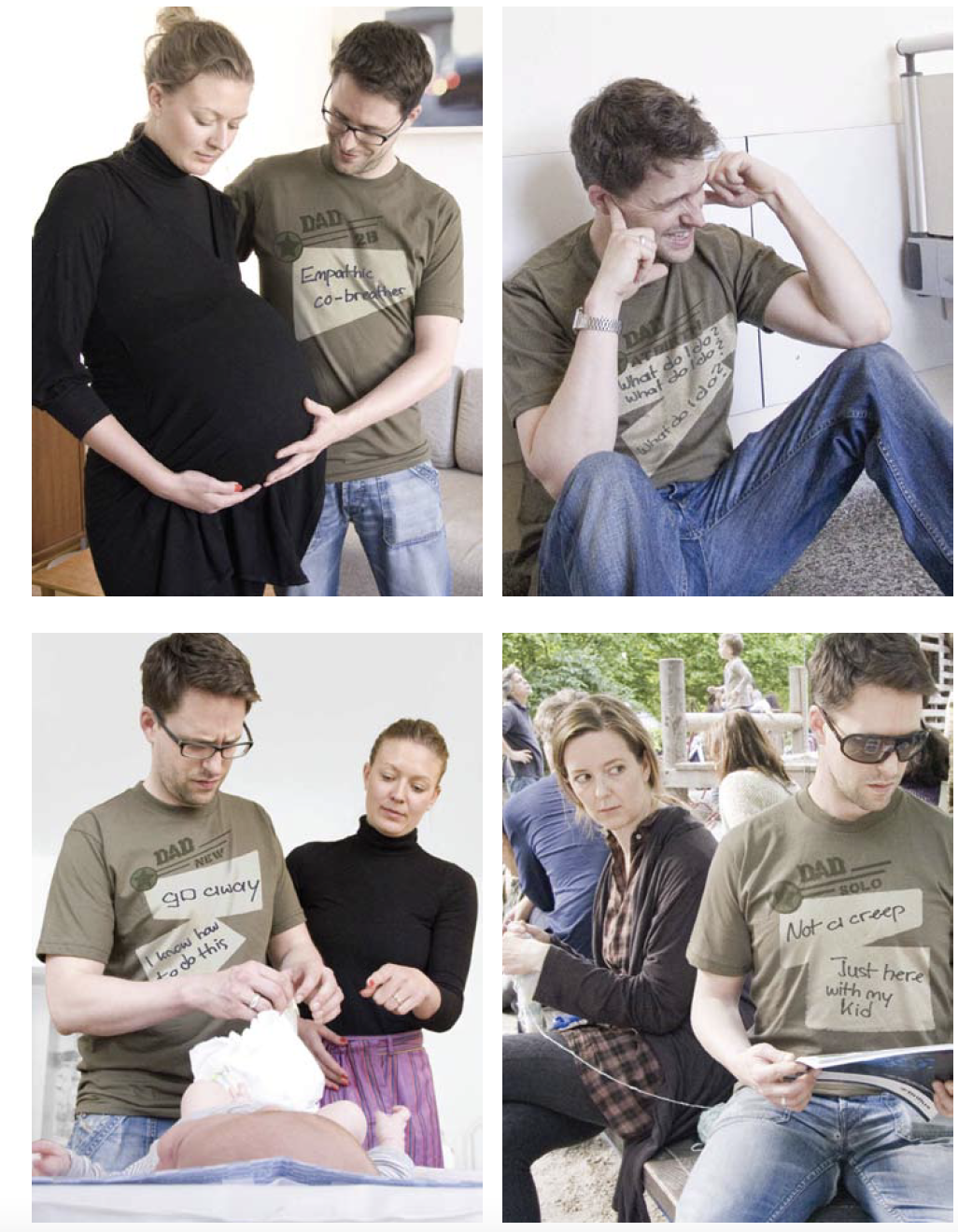
16 C-SECTION
In the United States, a third of all babies are delivered via C-section.
Egg Parents By Thomas Overthun
Carrying children to term in utero is so … old-fashioned. What if humans, like their distant mammalian cousins, the platypus, could lay eggs instead? Odd thought? Scary? Eerily reminiscent of a seventh-grade, take-home science experiment? Well, it might just better suit our evolving needs and lifestyles. This video explores the possibility.
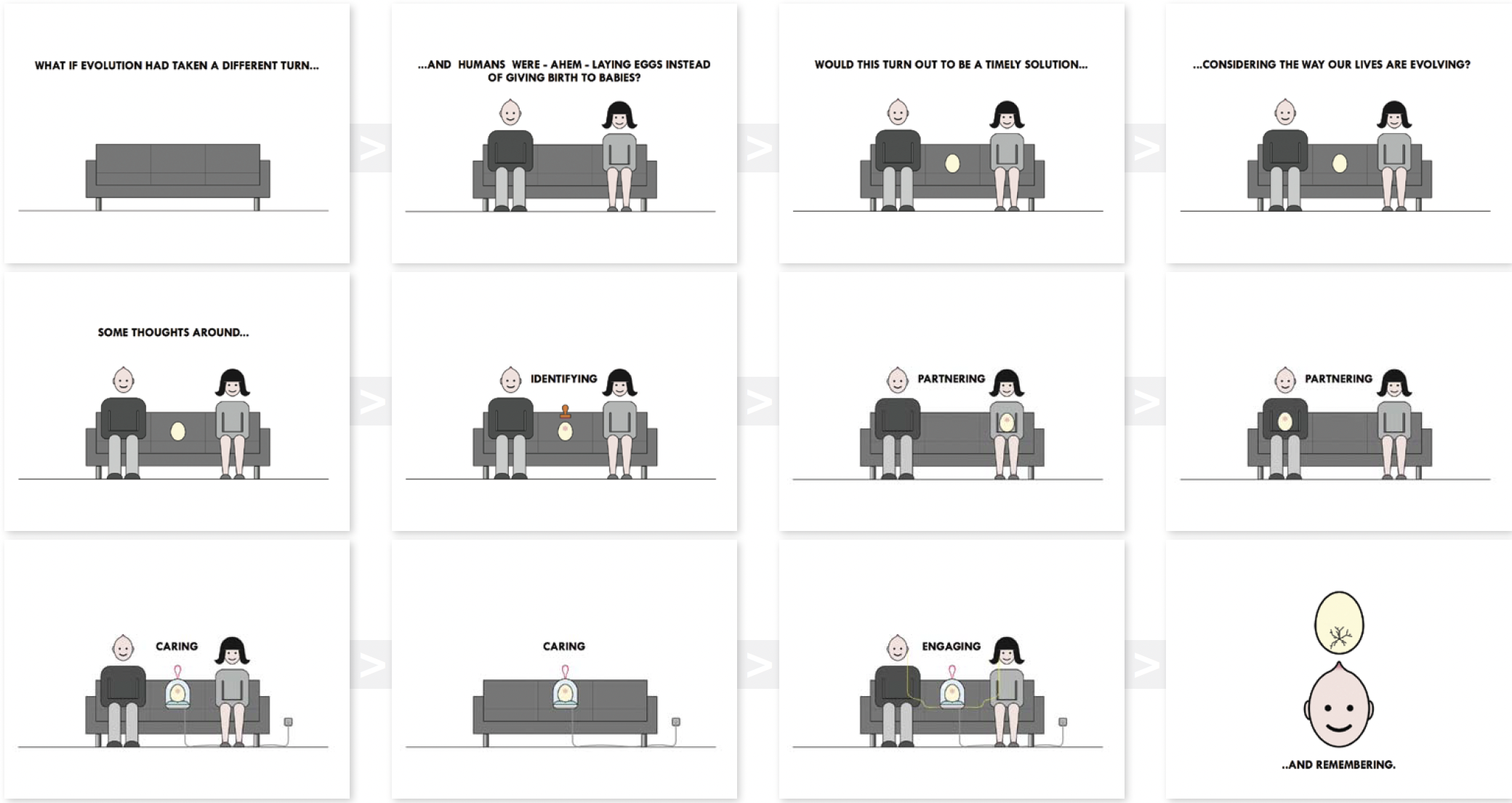
17 BUILDING
It can take up to 21 days for a bird to build its nest.
Nature/ Nurture By Graeme Findlay
Wildlife is remarkably adept at adaptation. Whether creatures are winged or grounded, able to fly or inclined to scurry, they can survive (and often thrive) in seemingly inhospitable environments. Humans of the all-too-common variety are less amenable to change, particularly when it comes to accommodating nature and other members of the animal kingdom. This begs the question: how can people erect cities and suburbs that peaceably exist with “native” surroundings and “inhabitants”? Nature/Nurture starts with a series of multitasking lampposts: dual-use devices designed to light roadways and house small local or migratory birds. The design provides people with better visibility and birds with shelter — shade by day and warmth by night. The streetlight also attracts bugs to supplement the bird’s diet. Yum.
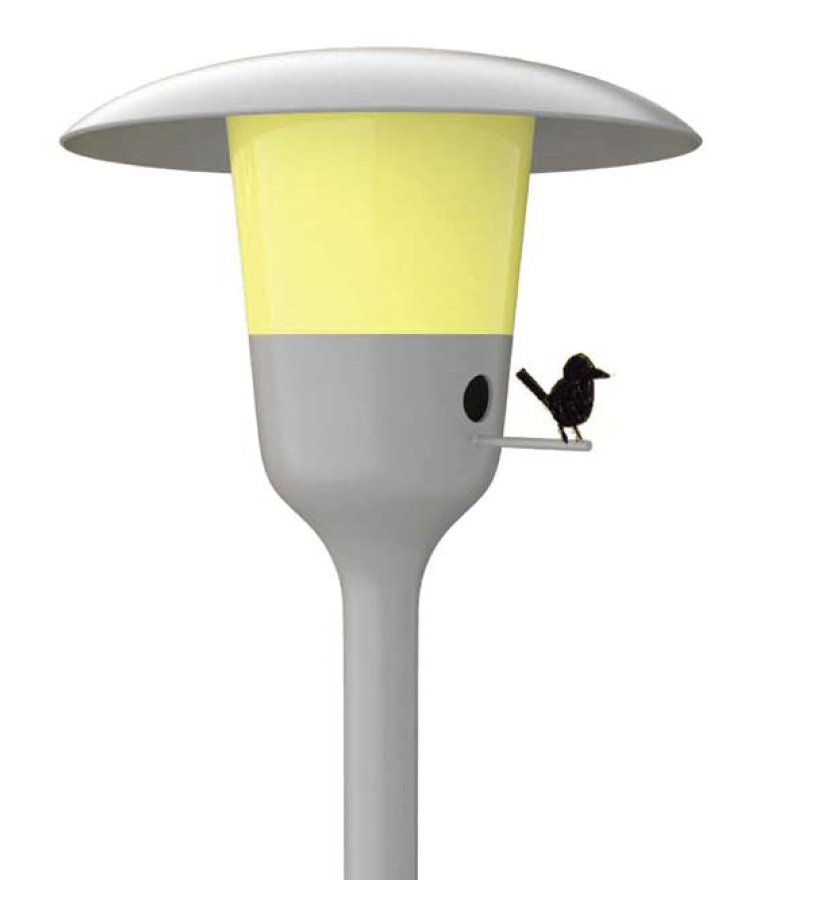
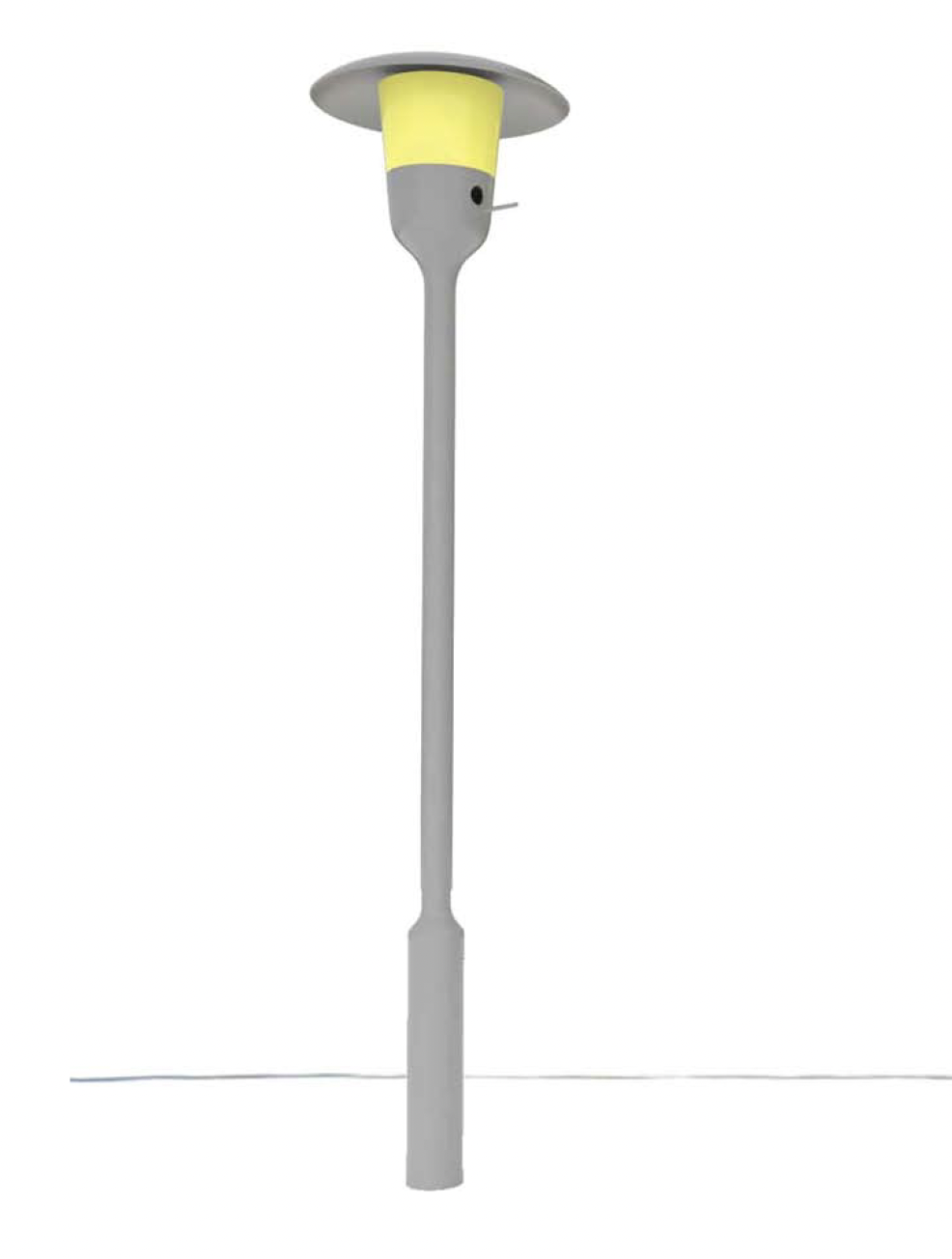
Special thanks to Rob Lister, Blaise Bertrand, IDEO Health
IDEO (Munich - London - San Francisco - Boston - Shanghai - Chicago - Palo Alto - New York).
Heading 1
Heading 2
Heading 3
Heading 4
Heading 5
Heading 6
Lorem ipsum dolor sit amet, consectetur adipiscing elit, sed do eiusmod tempor incididunt ut labore et dolore magna aliqua. Ut enim ad minim veniam, quis nostrud exercitation ullamco laboris nisi ut aliquip ex ea commodo consequat. Duis aute irure dolor in reprehenderit in voluptate velit esse cillum dolore eu fugiat nulla pariatur.
Block quote
Ordered list
- Item 1
- Item 2
- Item 3
Unordered list
- Item A
- Item B
- Item C
Bold text
Emphasis
Superscript
Subscript























